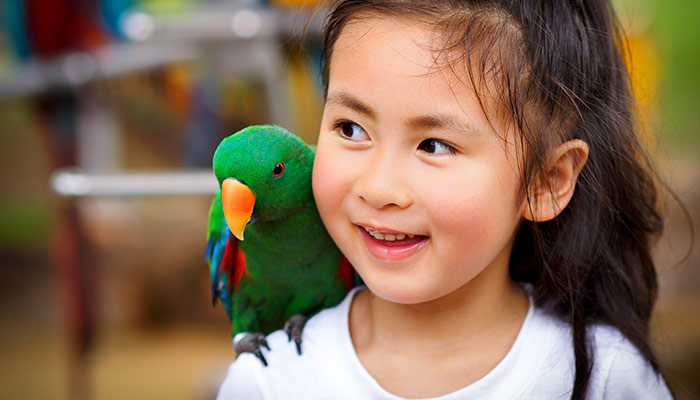While we believe that the books and resources recommended may be of value to you, keep in mind that these are suggestions only and you must do your own due diligence to determine whether the materials are appropriate and suitable for your use. PNC has no sponsorship or endorsement agreement with the authors or publishers of the materials listed.
HABITATS

Parrots of the Rainforest
Children will learn about parrots and their habitat.

Lesson Objective
Children will explore habitats by creating and learning about a parrot, which is a bird that inhabits the rainforest.
(Science) Science(Art) Art
What You'll Need
- Feathers in a variety of colors and sizes - at least 10 for each child
- Googly eyes - two for each child
- White construction paper - one sheet per child
- Crayons or markers
- Glue
What To Do
- Trace a child’s foot and both of their hands (one for each child).
- Cut out the tracings of the hands and feet, or have the children do the cutting if they can.
- The foot becomes the body of the parrot (with the toes pointing down) and the hands are the wings (with the fingers pointing outward).
- Have the children glue the wings to each side of the body.
- Have the children decorate the wings with the feathers, and the body and face with markers.
- Distribute the googly eyes so that the children can glue the eyes onto their birds.
Resources
Home School Resources
Home educators: use these printable lesson PDFs to teach this lesson to your home schoolers. They're available in English and Spanish.
Content Provided By
Common Core State Standards Initiative – These lessons are aligned with the Common Core State Standards ("CCSS"). The CCSS provide a consistent, clear understanding of the concepts and skills children are expected to learn and guide teachers to provide their students with opportunities to gain these important skills and foundational knowledge [1]. (External) Visit the CCSS


